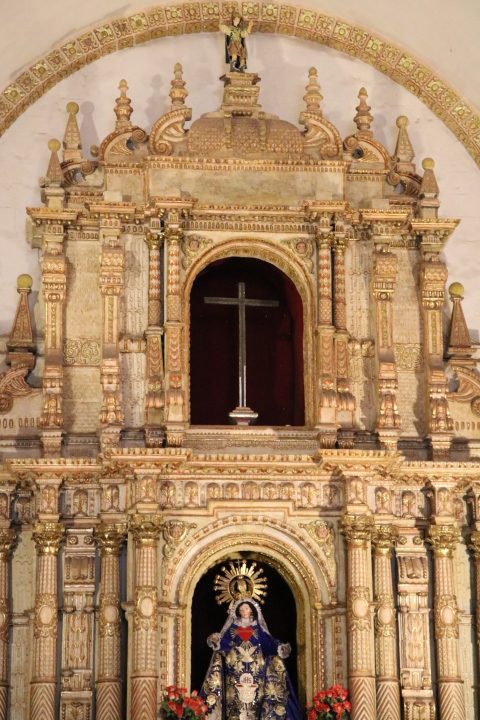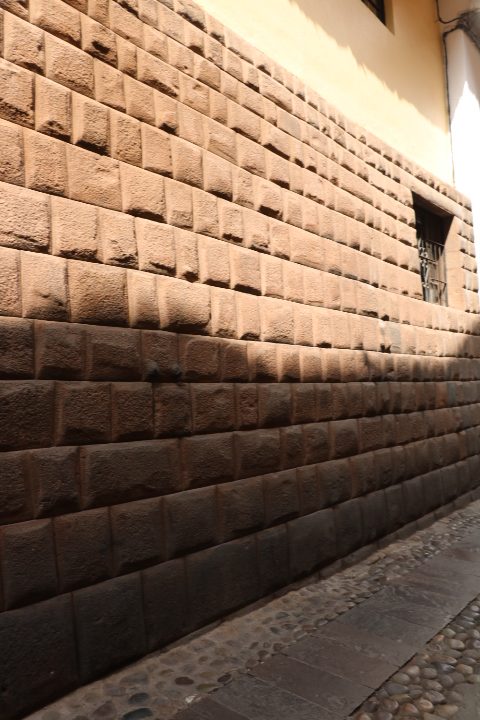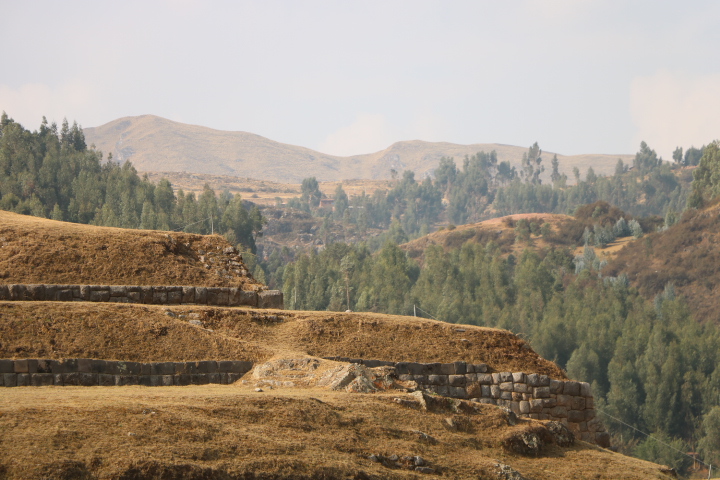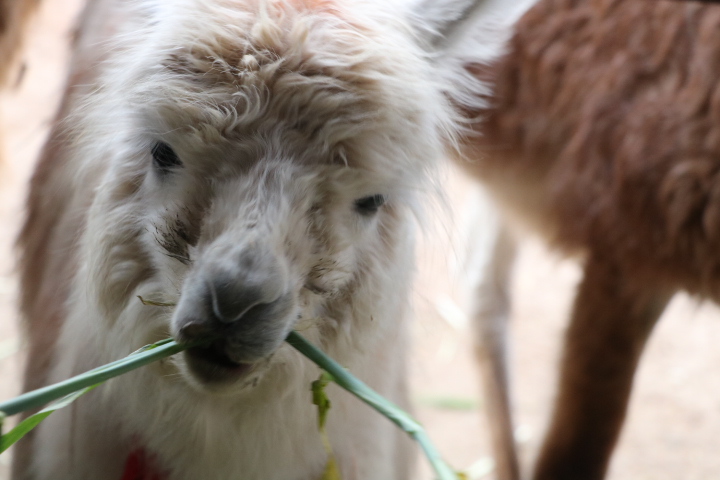Cusco was the headquarters of the Inca Empire from the 13th -16th century. The Plaza de Armas was the heart of the city and continues today. Arcaded colonial buildings surround the Plaza and the streets leading from it.
When we arrived last night it was full of people enjoying the start of the weekend.
Two flags fly here, the Peruvian flag and the rainbow-coloured flag of Tahuantinsuyo that represents the four quarters of the Inca Empire.
In the afternoon we joined the tour In the main plaza, which has been the scene of great historical events in Cusco and is home to Cathedral Basilica. The basilica was constructed in the Gothic- Renaissance style. There is also evidence of a baroque influence in the silverwork which decorates the interior of the building and of Inca symbolism in the Cathedrals grand doors.



Next we walked down a narrow street where the lower part of the walls of buildings were Inca and the upper part were newer as the colonial parts had fallen during the 1650 earthquake. This led us to Santo Domingo church, built upon the foundations of the Inca temple Koricancha, which was dedicated to sun worship.










Continuing by bus we visited the city’s nearby ruins of Sacsayhuaman, (Saqsaywamam) a magnificent example of Incan military power.

It was built in the 15th century by Pachacutec, the 9th Inca Emperor between 1438 and 1471 during the height of the Inca civilisation. It is thought to have been a ceremonial fortress with religious functions. The stones used in its construction are large and came from distant quarries. They fit together without mortar.

The walls have a distinct zigzagging shape which our guide said it resembled the head of a puma and the projections were the teeth. The puma was considered a sacred animal in Inca mythology.




The structure comprises of shrines and towers as well as residences, warehouses and aqueducts. There are classic Inca doorways which are always in the shape of a trapezium.
Further on was Tambomachay, another archaeological site. Tambo means inn or guesthouse. It consists of a series of aqueducts, canals and waterfalls that run through the terraced rocks. It is situated near springs which still flow today.
Its function is uncertain. It may have been a military guard post, a spa resort for Incan elite or imperial baths. It could have also served a religious function.

On our return to the city we visited a llama and alpaca ranch and saw women at work weaving various items using the wool from the alpacas in particular.






